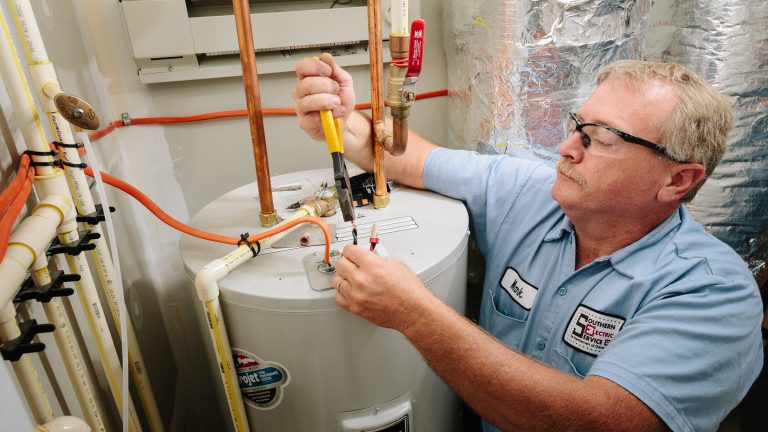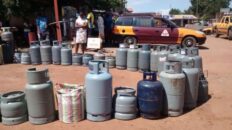How Much Does Water Heater Installation Cost in 2023.
In this article, we discuss the cost of installing a water heater, the different types of water heaters available, and the warning signs that point to a failing system.
Clean, hot water has become a comfort in almost every household. While the need for hot water in a house is unchanging, the way in which it’s heated isn’t, with various tanks and fuel sources available to homeowners.
Water heater replacement costs can range from $820 to $3,500, according to our research. Those figures include the unit and labor. Whether purchasing a water heater for a new home or replacing a broken one, it’s important to understand the types of water heaters available to you and how much they cost.
Average Water Heater Installation Costs
The type of water heater you want to be installed greatly influences your price. For example, a tank water heater may cost as little as $820, while a tankless water heater installation starts at around $1,200. Labor for water heater installation tends to cost around $40 to $200 per hour for a plumber. Installation of a water heater takes around one to three hours.
Water Heater Cost by Size
Below is a breakdown of the average water heater cost by tank size.
30-gallon: $270–$1,000
40-gallon: $300–$1,600
50-gallon: $400–$2,500
75-gallon: $900–$3,200
80-gallon: $1,000–$3,200
Compare Water Heater Installation Cost
| Water Heater Type | Average Installation Cost | Average Annual Cost | Lifespan | Efficiency Factor (EF) |
|---|---|---|---|---|
| Tank | $820–$1,290 | $250 | 8–12 years | .58%–.60% |
| Tankless | $1,200–$3,500 | $175 | 15–20 years | .92%–.95% |
| Gas | $500 (+venting) | $250 | 8–12 years | .58%–.60% |
| Electric | $700 (+venting) | $500 | 8–12 years | .92%–.95% |
| Solar | $2,000–$3,000 | $175 | 20 years | 1.0%–1.1% |
| Indirect | $1,500 | $355 | 15–20 years | .59%–.90% |
| Hybrid Heat Pump | $1,200–$3,500 | $250 | 8–12 years | 2.0% |
Tank vs. Tankless Water Heater Costs
Tank and tankless water heaters are two of the most common types of water heaters available.
Tank Water Heaters
Storage tank water heaters are a popular choice for homeowners, constantly holding and heating gallons of water. Water heaters are installed out of sight, oftentimes in a garage, basement, or utility closet. To heat the water, tank water heaters typically use electricity or natural gas.
Storage tank water heaters are easier to install than their tankless counterparts, requiring about three hours of labor. Established as the conventional water heater that’s easy to install, storage tank heaters are less expensive than tankless systems, running between $820–$1,290.
Although a more affordable option, tank heaters are less energy-efficient since they constantly run to maintain the desired tank temperature. As a result, these tanks have higher utility bills and a shorter lifespan. Tank water heaters use 58%–60% of energy to heat your water effectively, and they last for around eight to 12 years.
Tankless Water Heaters
Tankless water heaters work by heating water as needed. The system uses a gas burner or electricity to heat the water pipe, supplying water on demand. They tend to have better energy savings than tank water heaters, as tankless water heaters feature an efficiency factor (EF) of .92%–.94%. In other words, they effectively convert 92%–94% of its energy to heated water.
Like a hot water storage tank, a tankless unit can be stored in a basement or utility closet. Smaller than a tank unit, tankless heaters can also be mounted to a bathroom or bedroom wall.
Tankless water heaters have a higher initial price compared to tank heaters, costing homeowners between $1,200–$3,500. The higher cost is a result of a more labor-intensive set-up, as new gas and water lines are required for installation.
For electrical tankless heaters, new electric wiring will need to be installed. Although the installation of tankless heaters is less affordable than traditional models, they’re more efficient and incur a lower energy cost than their counterparts. Additionally, these water heaters last longer, with a typical lifespan of about 20 years.
Gas vs. Electric Water Heater Costs
Gas and electrical models are available for both tankless and tank water heaters, each providing homeowners with unique pros and cons.
When purchasing one of these water heaters, you also decide between power venting and direct venting. Power venting uses a fan to push exhaust air out of your home. This option adds around $300–$600 to the water heater’s price. In addition to this, you will also have an additional $300–$500 for more wiring and electrical work. Direct venting, which brings combustion air from outside and exhausts directly outside your home, adds around $500–$1,000 to your unit.
Electric Water Heaters
An electric tank is less expensive to purchase and install than a gas tank, with a residential 50-gallon tank water heater priced around $500. However, the total cost of the monthly operation tends to be more expensive than that of a gas heater. This heat source is considered safer than gas, as there’s a smaller risk of a leak or combustion.
The downside to a more environmentally friendly electric heater is that if the power goes out, so does the hot water. Electric water heaters feature an EF rating of approximately 0.90%–0.95% and an average lifespan of eight to 12 years.
Gas Water Heaters
Gas heaters are more expensive to purchase at around $700 for a 50-gallon tank. However, the operational cost of these heaters costs less than an electric model. Although natural gas is more apt to combust or leak, a gas model provides hot water without electricity.
The biggest downside to a gas water heater is its harm to the environment through the emission of carbon dioxide. They also feature a lower EF rating resulting in 60%–70% energy efficiency and an eight to 12 year lifespan.
Energy-Efficient Storage Tank Water Heater Costs
If you want to be more environmentally conscious, consider these energy-efficient water heaters.
Solar Water Tank Heaters
These water heaters use natural sunlight to heat water. A solar water heater system consists of a storage tank that holds water and solar collectors that generate heat. Typically, a solar water heater relies on a traditional water tank in case of an emergency.
Solar water tank systems can be broken down into two types: active systems and passive systems. An active system uses a pump to supply homes with water, while a passive system uses natural convection to circulate water throughout the home. Homeowners can expect to pay around $2,000 for a passive system and $3,000 for an active system. The higher cost is due to the extensive labor and need for a back-up water heater.
Indirect Water Heaters
Indirect water heaters use the energy from an existing furnace or boiler to heat water in the tank. To do this, water from the boiler is circulated into the tank’s coils, heating the water inside. This water heater model is energy efficient, relying on heat created by a boiler or furnace. Although the monthly price of an indirect water heater is low, the initial purchase and water heater installation cost is more expensive than traditional heaters and is priced around $1,500.
Hybrid Heat Pump Water Heaters
Hybrid heat pump water heaters are the most efficient tank heater, but they are also the most expensive. These units use heat from surrounding air to generate hot water using a compressor and coils. Hybrid heat pump water heaters are relatively large and not ideal for smaller spaces, as they need seven feet of clearance. On average, these units cost around $1,200 to $3,500 for installation and materials.
Additional Cost Factors for Water Heater Installation
There are more factors to water heater installation than just the water heater itself. Read over these typical factors below.
- Location in the home: The location of the water heater in your home will influence the cost of labor. For example, if the water heater has to be placed in the basement or a corner of the attic, these difficult-to-reach areas can drive up the installation cost.
- Venting system: As stated earlier, power venting can add a total of $600 to $1,100 to your installation. Direct venting may add anywhere between $500 and $1,000 to your installation’s price.
- Size: The size of your water heater is informed by the number of people in your home, and prices increase as the size does. A 40-gallon water heater effectively meets the needs of a home with two people, and it costs around $320 to $1,600. For homes with five people or more, you may need to consider a 75-gallon (average price of $900 to $3,000) or an 80-gallon (average price of $1,000 to $3,200) water heater.
- Materials: Water heater installation requires a variety of materials, including venting pipes, pressure valves, piping for water and gas, thread compound, solder, and more. A professional installer may use more materials for more complicated installations.
Local permits (if needed): Local permits may be required for water heater installation, depending on your home’s location. Sometimes these permits come with an additional cost. - Expansion tank: A professional installer may remove an expansion tank for your installation. This tank is designed to handle the thermal expansion of water and prevent excessive water pressure. Expansion tanks cost around $40 to $150.
- Tank removal price: Sometimes, an installer may charge extra to remove a previous water tank.
- Relocating unit or converting from fuel type: The price greatly varies if you want to have a water heater moved. Relocating a water heater may cost as little as $200 or as much as $10,000. Converting fuel types for your water heater can be more costly. For example, switching from electric to gas requires new gas lines, which may add an extra $1,500–$2,300 to installation.
- Carpentry work (if needed): Depending on what your water installation requires, such as removing or adding woodwork in your attic to fit a heater, carpentry work may be required. This adds more cost to labor and hours worked.
Thanks for reading to learn “How Much Does Water Heater Installation Cost in 2023”.







